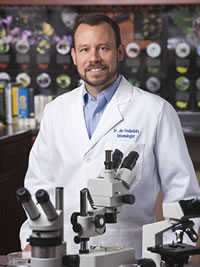Every manager of a food manufacturing plant knows that food safety cannot be compromised under any circumstances and that the entire process is dependent on a number of aspects working effectively, efficiently and in a healthy and safe manner. However, no process is foolproof and any breakdown in the manufacturing process could lead to contamination. Some of the most pervasive contaminants come as a result of insects, rodents and other pathogens finding their way into the plant. It is for this reason that pest management is critical to food manufacturing.
Depending on the type of food product and how it is processed, there are ample opportunities for pests to associate themselves into the food manufacturing life cycle – be it during the growth cycle, at harvest, within the mode of transportation, during material preparation and final processing.
Fortunately, today’s scientific equipment provides the ability to detect amounts of contaminated materials in a given finished product down to the nanogram and “zero” continues to get smaller and smaller with each advancement in chemical [contaminate] detection technology. However, as plant science and seed chemistry improve, so does yield production. With this production increase comes additional processes that create opportunity for pest threats to enter food-manufacturing operations. In order to maintain a safe and clean facility both the food manufacturing facility manager and pest management personnel must address each issue head on.
There are a number of factors that pose challenges to proper pest management in food facilities such as the time of operation [some pests prefer daytime, while others prefer nighttime], production cycles [season of harvest can denote degree of pest infestation], maintenance schedule [how often do lines or plants shut down for cleaning and up keep], delivery schedule and flow of raw materials [when and how they enter and leave] throughout the plant. The addition of other factors, like moisture levels and temperature extremes within the construction elements of the plant, can create ideal conditions for pest harborage and nesting areas.
The world is a smaller place today and food transportation can be accomplished by multiple sources; food products are now shared across borders and oceans in a much shorter time frame than before. Due to the potential introduction of a new pest species or plant disease, it is crucial that facilities and their pest management partners develop a common platform for risk assessment, analysis and preventive controls to achieve success. Having the ability, discipline and quality control processes in place to intercept or disrupt this potential hazard are extremely important. The pest management professional is a line of defense that supports the food manufactures by inspecting, performing audits, identifying and preventing, improving and correcting hazards or situations that could cause damage, contamination or illness.
The consequences of not taking pest management seriously can be devastating to a food manufacturing company – resulting in fines, production shutdowns, closures and even bankruptcy filings. Not to mention a tarnished reputation, shaken confidence and public scrutiny of the brand and finished product. Certain failures may even create a system wide product recall compounding the negative effects.
The words ‘and’, ‘team’, ‘partner’ and ‘critical’ to describe the approach of a pest management professional and food manufacturing facility management and are key in understanding the role each plays – one to cut the risks and the other to protect, both helping each other accomplish the desired level of food safety.
Being proactive about food safety, including pest management, is paramount in protecting life and health. In the food safety industry food manufacturers work with a lot of different standards, protocols and regulations, such as Good Manufacturing Practices (GMPs), Standard Operating Procedures (SOPs), and Hazard Analysis Critical Control Point (HAACP). The standards are risk-based in order to address the issues as risks to public health and food safety due to activities of pests.
FDA is trying to level the playing field on food safety with the implementation of the Food Safety Modernization Act (FSMA) – the biggest change to food safety laws since the 1930’s – helping to bring together the various practices and governing agencies under a common goal – preventing food borne illness with sustainable and accountable improvements in food safety using prevention based controls.
As part of FSMA compliance, the pest management professional must be an integrated member of the food safety team. Thorough knowledge of the plant’s quality programs, manufacturing practices, approved product lists and sanitation programs is critical to success. Both pest management professionals and food manufacturing operations managers should also be aware of new pest control products and application techniques to fully offer the facility the best pest management program possible.
In all food manufacturing facilities, the pest management professional and manufacturing operations facility manager should both be prepared to:
- Work together with open communication.
- Provide training to both sides, whereas the plant team trains the pest management professional on the facility and processes with expectations of the service agreed upon. The pest management professional trains the food manufacturing team on basic pest management and where this fits into their food safety program and HACCP system.
- Set written expectations of services, treatments as well as a process for proper documentation. Utilize an appropriate accountability system of mapping and numbering all points of inspection, monitoring and treatment.
- Both parties should remain open to conversation regarding new and innovative techniques and treatment options that utilize the preventive intent of FSMA in conjunction with the concept of Integrated Pest Management (IPM).
The bottom line is that foodborne illness is largely preventable if everyone can be held responsible and accountable at each step they own for controlling hazards that can cause illness.





